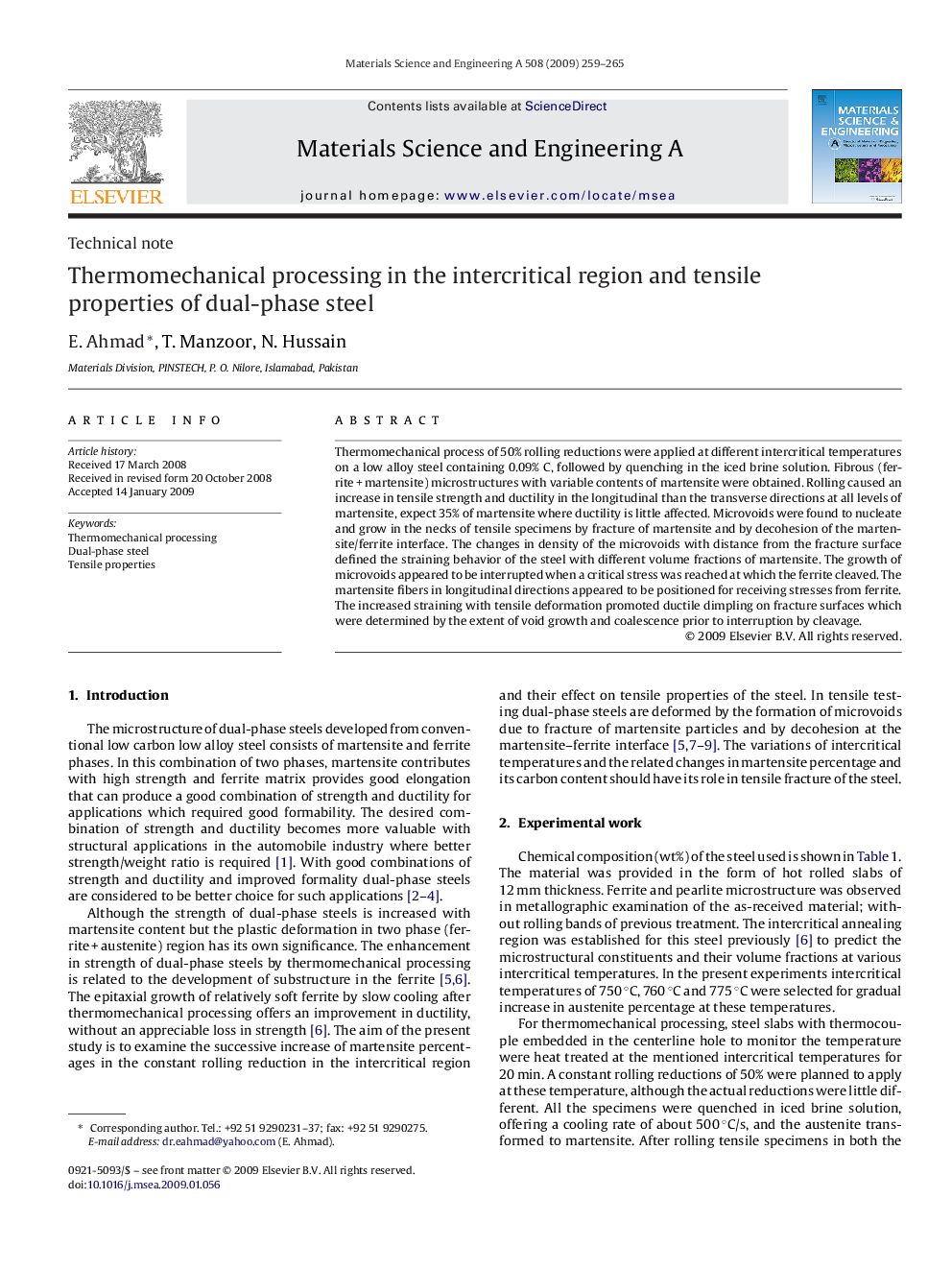| Article ID | Journal | Published Year | Pages | File Type |
|---|---|---|---|---|
| 1580980 | Materials Science and Engineering: A | 2009 | 7 Pages |
Thermomechanical process of 50% rolling reductions were applied at different intercritical temperatures on a low alloy steel containing 0.09% C, followed by quenching in the iced brine solution. Fibrous (ferrite + martensite) microstructures with variable contents of martensite were obtained. Rolling caused an increase in tensile strength and ductility in the longitudinal than the transverse directions at all levels of martensite, expect 35% of martensite where ductility is little affected. Microvoids were found to nucleate and grow in the necks of tensile specimens by fracture of martensite and by decohesion of the martensite/ferrite interface. The changes in density of the microvoids with distance from the fracture surface defined the straining behavior of the steel with different volume fractions of martensite. The growth of microvoids appeared to be interrupted when a critical stress was reached at which the ferrite cleaved. The martensite fibers in longitudinal directions appeared to be positioned for receiving stresses from ferrite. The increased straining with tensile deformation promoted ductile dimpling on fracture surfaces which were determined by the extent of void growth and coalescence prior to interruption by cleavage.
